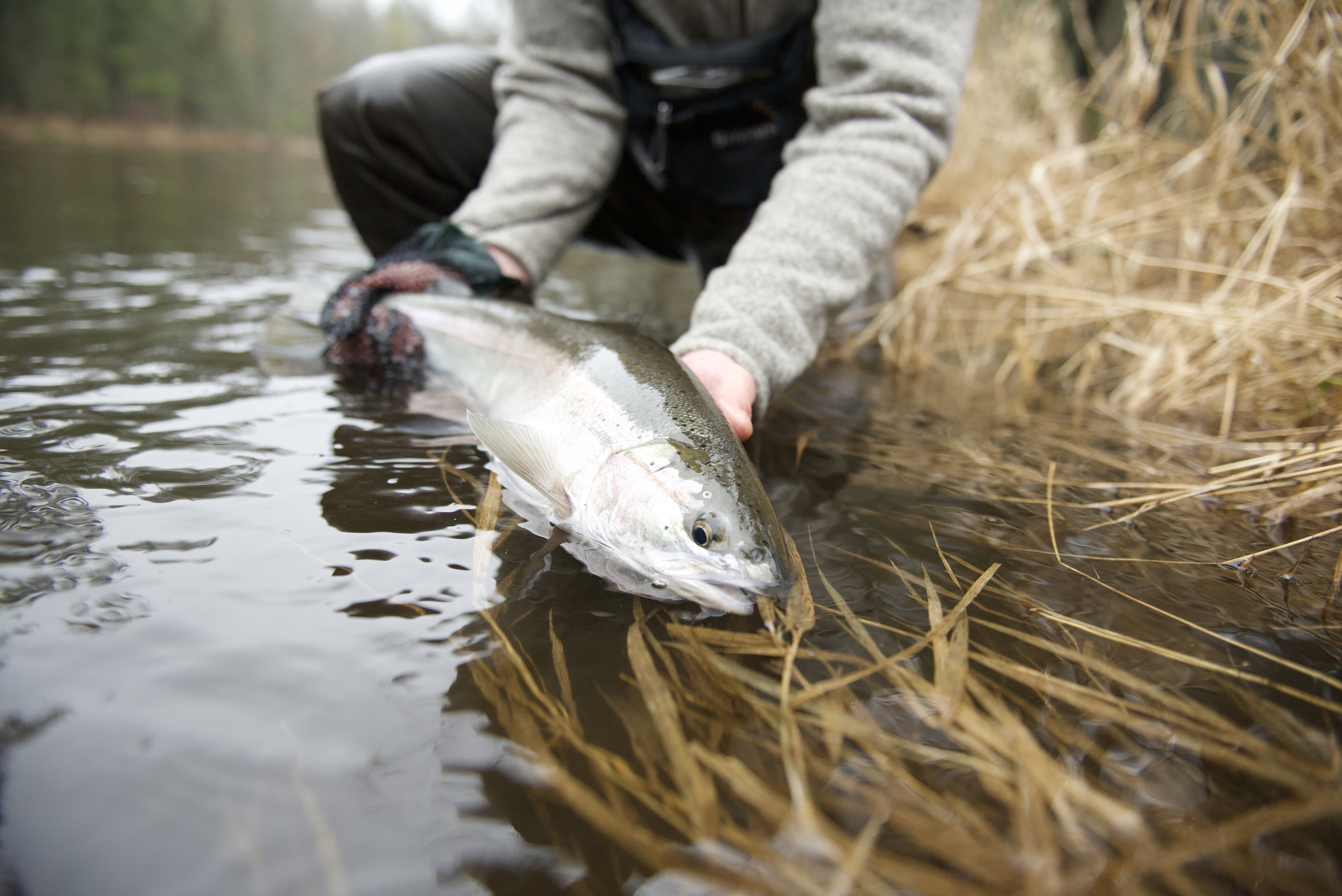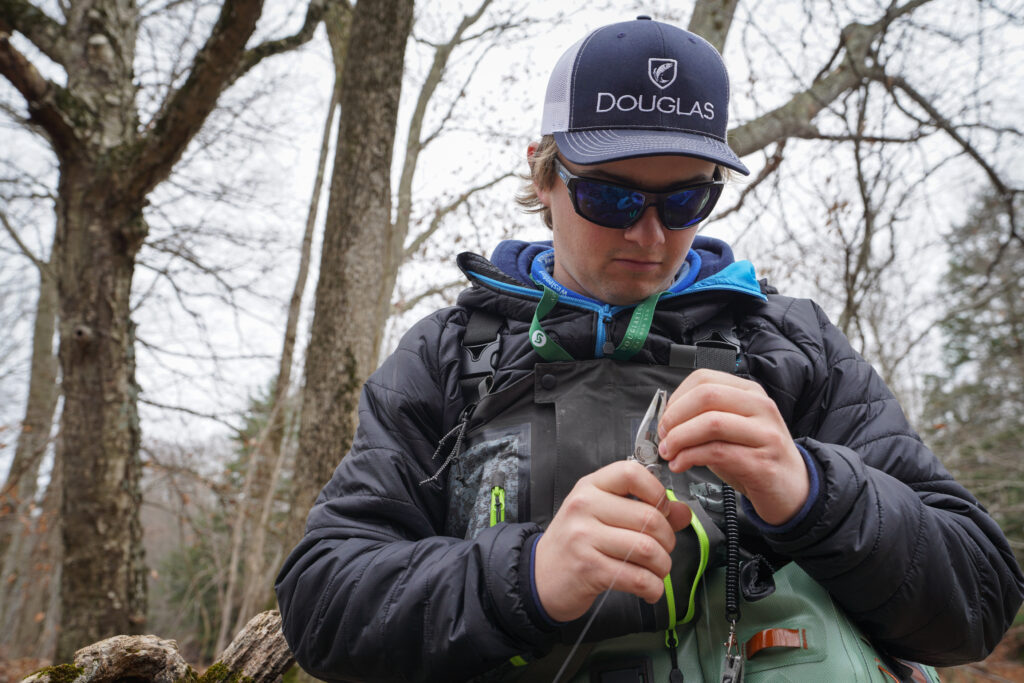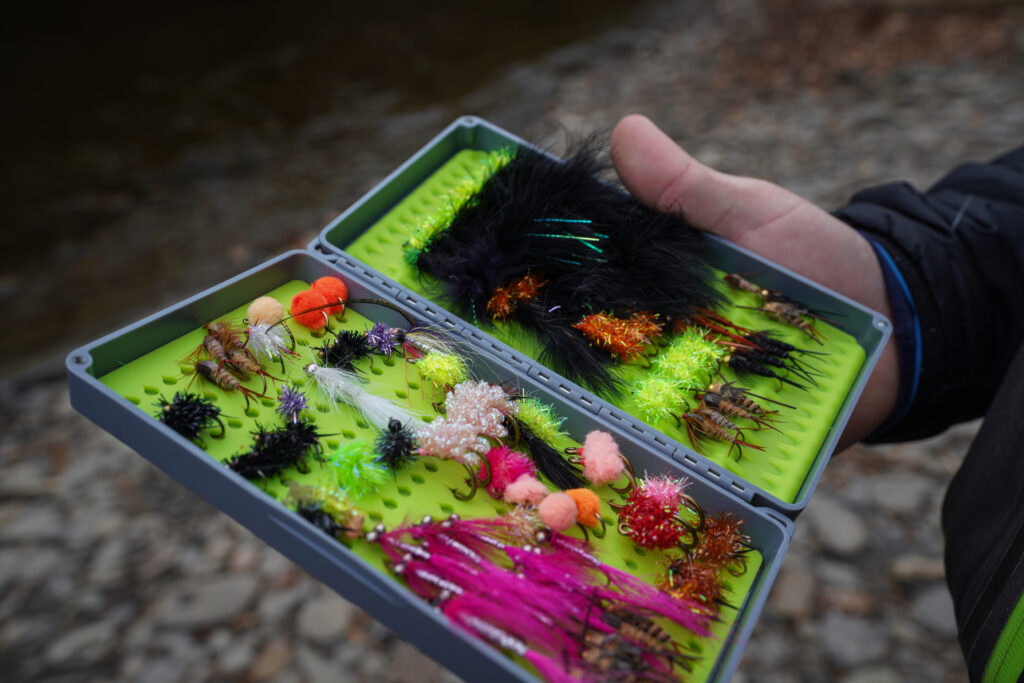Centerpin fishing is a specialized method of fishing that originated in the Pacific Northwest and is now popular in many other regions around the world. It involves using a long, thin rod and a large, free-spinning reel to drift bait or lures in rivers or streams.
The centerpin reel is the centerpiece of this fishing method. Unlike traditional spinning reels, which have a fixed spool, centerpin reels have a large, free-spinning spool that rotates freely on the reel’s axis. This allows anglers to cast their bait or lures upstream and let them drift downstream naturally with the current.
The centerpin rod is also specialized, typically ranging from 10 to 14 feet in length, and featuring a long, flexible design that allows anglers to cast and control their line with incredible precision. The rods are usually made of lightweight materials such as graphite or fiberglass, and they often have a sensitive tip that can detect even the slightest nibble from a fish.
Centerpin fishing is often associated with steelhead and salmon fishing, but it can also be used for other species such as trout, grayling, and smallmouth bass. It requires skill and patience, as anglers must learn to read the water and control their drifts to present their bait or lures in the most natural way possible.

Centerpin Setup
Setting up a centerpin rod can be a bit intimidating for beginners, but it’s actually quite simple once you understand the basic steps. Here’s a step-by-step guide to help you get started:
- Choose the Right Reel: The first step in setting up a centerpin rod is choosing the right reel. You want a reel that is specifically designed for centerpin fishing, as these reels are typically much larger and have a larger diameter spool than traditional spinning reels. They also feature a free-spinning design that allows you to cast and drift your bait with incredible precision.
- Spool the Reel: Once you have chosen your reel, it’s time to spool it up with line. Most centerpin reels are designed to hold a lot of line, so you’ll want to use a larger spool of line than you would with a traditional spinning reel. Generally, you’ll want to fill the spool with enough line so that it’s about 1/8″ to 1/4″ from the top of the spool.
- Attach the Line: Once the spool is loaded with line, you’ll need to attach it to the rod. Start by tying a knot in the end of the line, and then thread the line through the rod guides, starting at the tip and working your way down to the reel. Once you reach the reel, tie the line onto the spool using a knotless or arbor knot.
- Add a Float: Centerpin fishing often involves using a float to suspend your bait at a specific depth. To attach the float, tie a small piece of line to the bottom of the float and then tie the other end of the line to the mainline using a small swivel.
- Add a Leader: Finally, you’ll want to attach a leader to your mainline. The leader should be made from a lighter line than your mainline, and it should be long enough to allow your bait to drift naturally in the water. To attach the leader, tie it onto the mainline using a small swivel.
Once you have completed these steps, your centerpin rod is ready to use. Remember to practice casting and drifting your bait to get a feel for the reel and line, and adjust your setup as needed to achieve the best results.

How to Cast a Centerpin Rod
Casting a centerpin rod is a bit different than casting a traditional spinning or baitcasting rod. It requires a bit of practice and skill to get it right, but with some patience and persistence, anyone can learn to cast a centerpin rod. Here’s a basic guide to casting a centerpin rod:
- Hold the Rod: To begin, hold the rod with both hands, with your dominant hand on the reel and your non-dominant hand on the lower part of the rod handle. Make sure your grip is firm but not too tight, and that your wrists are loose and flexible.
- Position Yourself: Position yourself so that you are facing the water and have enough room to make a full cast. Stand with your feet shoulder-width apart, and keep your weight centered over your feet for balance.
- Position the Line: Hold the line between your thumb and forefinger, and use your other hand to pull the line off the reel and extend it behind you. Make sure there is enough slack in the line to allow for a full cast.
- Make the Cast: To make the cast, slowly move the rod back behind you, using your non-dominant hand to guide the rod and your dominant hand to control the reel. Once the rod is fully extended behind you, use a quick, fluid motion to bring the rod forward and release the line from your fingers.
- Control the Drift: As the bait or lure drifts downstream, use small, subtle movements of the rod to control the speed and direction of the drift. This can help you present the bait in a more natural and enticing way to the fish.
- Reel in the Line: Once the bait or lure has drifted downstream, reel in the line and repeat the process for your next cast.
Remember, centerpin casting takes practice, and it may take some time to get comfortable with the technique. Start with short casts and work your way up to longer casts as you gain experience and confidence. With patience and practice, you’ll be able to make long, accurate casts and catch more fish with your centerpin rod.

The Best Centerpin Rods
The best centerpin rods should have the following key characteristics to make it suitable for the unique demands of centerpin fishing. Here are the most important features to look for in the best centerpin rods:
- Length: Centerpin rods are typically longer than traditional spinning or baitcasting rods, ranging from 10 to 14 feet in length. The extra length allows for longer casts and better line control when drifting bait or lures in the water.
- Sensitivity: A good centerpin rod should be sensitive enough to detect even the slightest nibble from a fish. This is especially important when fishing for species such as steelhead or salmon, which can be quite subtle when taking bait.
- Flexibility: Centerpin rods should be flexible enough to allow for a natural drift when casting bait or lures. This helps to make the presentation of the bait more realistic and enticing to the fish.
- Strength: Centerpin rods should also be strong enough to handle the weight of larger fish, such as salmon or steelhead. Look for a rod that has a high line weight rating and is made from strong, durable materials such as graphite or fiberglass.
- Balance: A good centerpin rod should be well balanced, with the weight of the rod evenly distributed throughout its length. This makes it easier to cast and control the line, especially for extended periods of time.
- Guides: The guides on a centerpin rod should be high quality and placed in such a way that they allow for a smooth, uninterrupted flow of line. They should also be spaced evenly along the length of the rod to ensure that the line doesn’t get tangled or snagged.
Douglas Centerpin Rods
When choosing a centerpin rod, it’s important to consider the factors listed above in order to find a rod that meets your specific fishing needs and preferences. Douglas makes some incredible centerpin rods that are all backed by our limited lifetime warranty.
Our centerpin rods come in two different models:
- LRS P11632M – 11’6”, 3 power, moderate action, 4-10lbs line.
- LRS P13644M – 13’6”, 4 power, moderate action, 6-12lbs line.
Douglas centerpin rods are designed to be:
- Light, sensitive, and well-balanced
- Larger guides to help with ice buildup
- Comfortable and durable rubber cork fighting butt
- Sensitive tip section with powerful mid and butt sections

Additional Resources:
